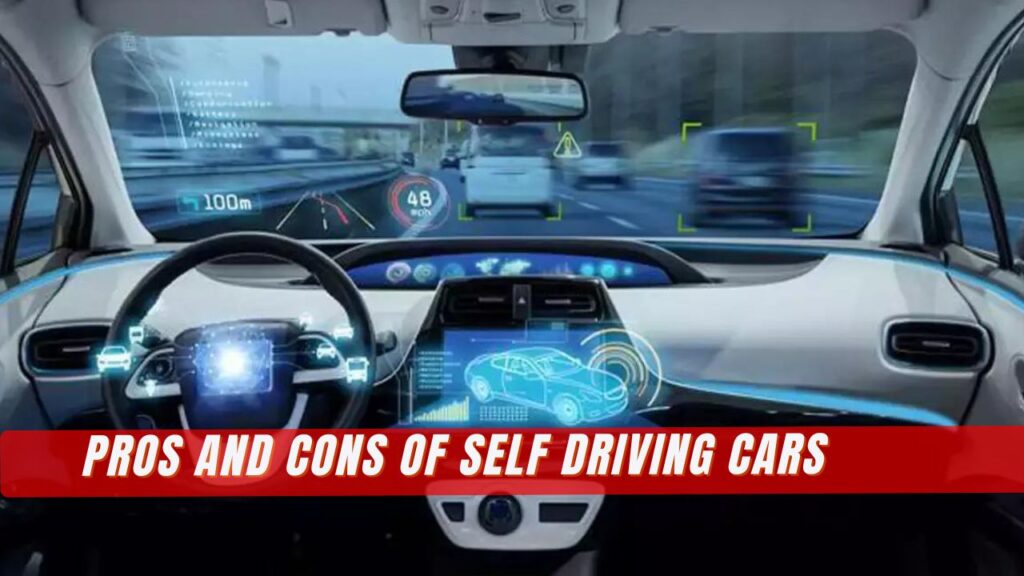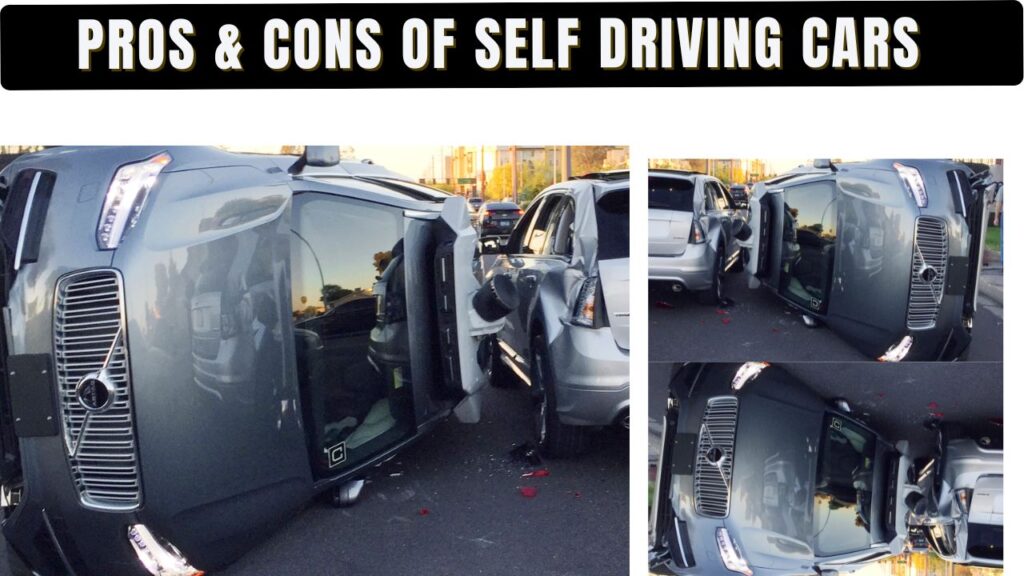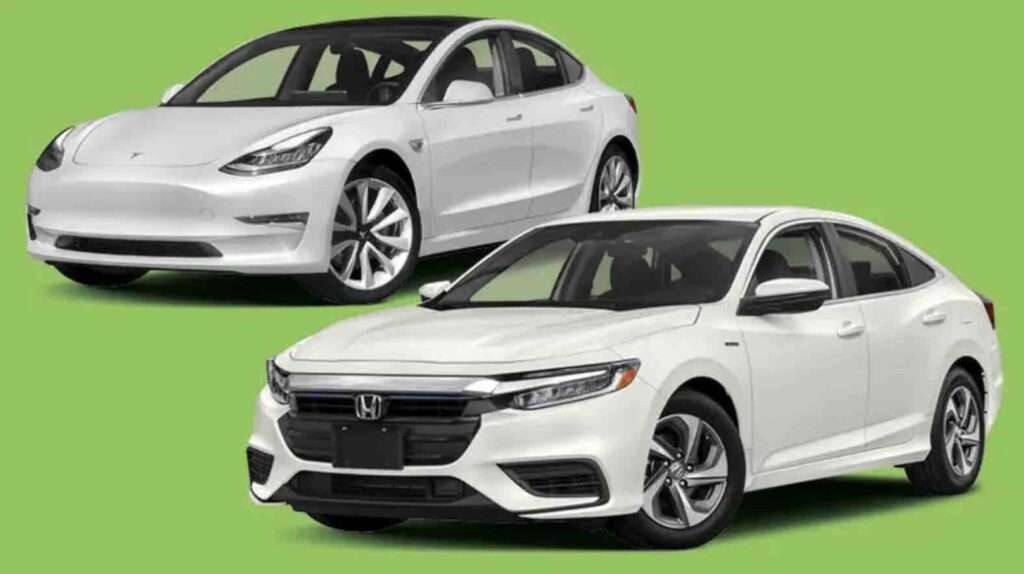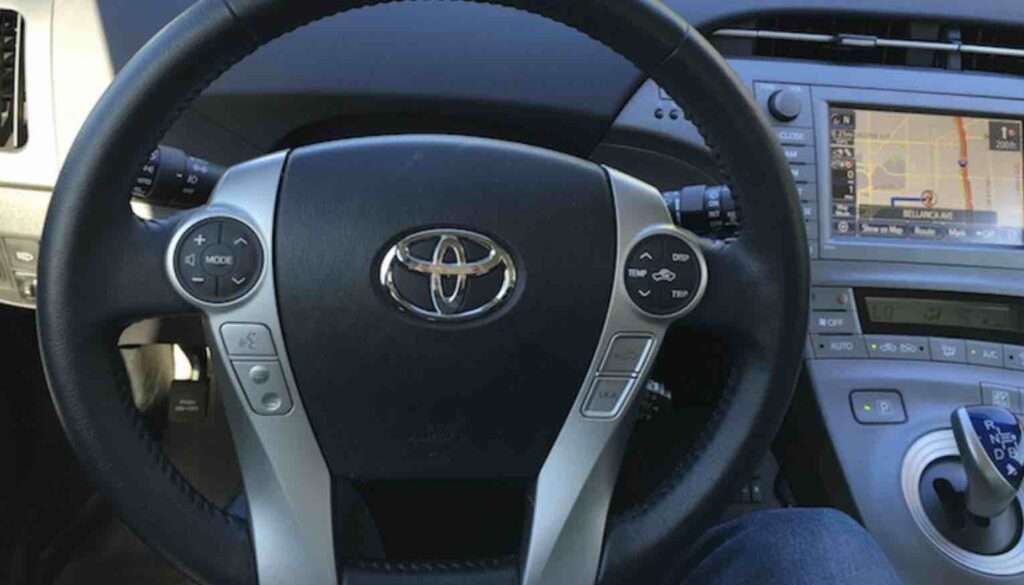Self driving cars pros and cons (Legal, Ethical, & Social Implications of Autonomous Vehicles)
So, in what ways could autonomous vehicles influence living for you in the times ahead? What would be the legal, ethical, and social implications of self-driving cars? are self driving cars safe pros and cons and what are some reasons why self driving cars are not safe as some people may consider it to be? What are self driving cars pros and cons look out for. These and more are what we will discuss in this article.

Autonomous Vehicles: Navigating the Legal, Ethical, and Social Implications of Self-Driving Cars
Imagine a world in which autonomous vehicles take care of driving themselves for you – without you needing to worry about safety, efficiency and environmental impacts of transportation! However, allure aside, it is crucial that we consider legal, ethical and social implications associated with self-driving car technology before jumping aboard this bandwagon.
In this blog post, we will delve deep into the legal, ethical, and social considerations surrounding self-driving cars to address safety concerns while uncovering any advantages or disadvantages they offer. AKA “self driving cars pros and cons”.
We will also look at why self-driving cars may not be safe as well as discuss pros/cons of autonomous vehicles to assess if they provide safe solutions to transportation needs.
Ready to explore the fascinating world of self-driving cars? Let’s start with an understanding of what an AV is.
What is an Autonomous Vehicle or Self-Driving Car?
An autonomous vehicle is any automobile that requires no human input to operate and travel safely and accurately from base to destination. Basically, it’s a car, truck, or any vehicle that drives itself.
While it’s a fact that there presently exists no fully self-driving car, the current state of research and development means that you may see such a machine as soon as 2030, according to Accenture.
In this piece, I’ll be taking a deep dive at some of the legal, ethical, and social implications of self-driving Cars, also known as autonomous vehicles.
Legal Considerations
What are some of the possible legal implications of self-driving cars on roads today and in the near future?
In truth, much of the legislation for autonomous cars are still in the formative stages around the world.
To start with, Sweden’s vision zero is a great starting block for automotive safety globally.
However, this policy does not fully capture the different interests necessary for a cohesive and all-embracing AV regulation for car manufacturers, AV owners, and motorway managers.
Each country at present is drafting new policies based on local culture, ethical perspectives, traditional behavior, and other relevant considerations.
For instance in countries in which women are legally not permitted to work in transportation or even drive (like Saudi Arabia up to 2018), is a woman passenger alone in an AV a violation of that law?
At the heart of the legal considerations of AVs is the question: ultimately whose responsibility is it, for instance, for an automobile accident involving a driverless car?
This dilemma has serious implications for insurance, liability, and reliability for both owners and AV car manufacturers.
At its core the legal considerations may be divided into these 6 areas:
1. Behavioral
Task responsibility and blame responsibility are parameters used to define culpability in automobile accidents.
Task responsibility refers to the legal and ethical obligations of the driver such as ensuring you are physically and mentally fit to operate a vehicle.
Blame responsibility refers to role responsibility, or who could have prevented or was responsible for preventing the accident, such as an automaker or a driver.
In the case of driverless vehicles, the lines are understandably blurred because as the human ‘safety driver’ or passenger, you are limited in how much you can effectively intervene.
2. Reliability
As a potential or actual AV owner, you should be aware that there are six recognized levels of driverless technology. They are:
- Level 0: Zero Automation (In which you control your car with zero machine AI input)
- Level 1: Driver Assistance Technology (In which you control your car with at least one machine AI-enabled assist such as cruise control)
- Level 2: Partial Automation (In which you can take control of your car but the machine AI handles some tasks such as acceleration)
- Level 3: Conditional Driving Automation (In which the machine AI automates most tasks but you can override this and take control whenever you like)
- Level 4: High Automation (In which the machine AI automatically takes control of your car in certain emergencies such as an impending collision. Your override options are still active)
- Level 5: Full Driving Automation: (In which the machine AI drives itself and requires zero input from you in all circumstances)
Where you are in this automation scale can determine reliability and liability issues, what to expect from an AV, and the assignment of culpability in the event of a mishap, i.e., who gets the blame.
It’s important to know your exposure to risk at each level as the owner of a driverless car. Such agreements must be properly articulated in any consent document offered by the car manufacturer.
3. Liability
Under the above scenarios, who is liable for compensatory payments and such indemnification?
Under the present precedents, the norm has been to treat AV accidents like airplane crashes, in which case the manufacturer and designer of the AI are liable for damages and compensation.
This is, however, as indicated, still an ongoing discussion.
4. Regulatory
Arguably, AVs can not be regulated as cars have been for the past two centuries. Currently, in the US, the DMV, which regulates automobiles in the country under its Autonomous Vehicles Program, is granting permission for AV makers to conduct tests on designated routes.
5. Security
Like any computer on the internet, AVs are vulnerable due to their need to be constantly connected to the information superhighway to function.
In terms of vulnerability to a cyber attack, even though most modern cars are reliant on Information technology to function properly, more or less, self-driving cars push this up a notch.
This has given rise to fears of malicious attacks that can result in loss of property, injury, and death for passengers and surrounding road users.
The concern here is whether embedded security for AVs is adequate to protect car owners of the future from remote carjacking.
Along the same line of thought lies the possibility of criminals using AVs, much like guns are used today, to commit crimes and/or acts of terrorism without the need to be physically present.
6. Insurance
With the issue of legal liability still in question, insurance claims may prove problematic on a case-by-case basis.
Ethical Questions
AV Testings on Public Roads
Since the approval of testing for AVs in select US cities, including Austin and Miami, there have been concerns expressed over how safe such tests are for other road users.
As more states enact legislation to make self-driving cars legal, these fears will continue to mount.
Privacy
As more aspects of vehicular control become digital processes, the issues of privacy become crucial.
In order to function maximally your autonomous vehicle will constantly siphon information from you in order to predict and anticipate behavioral tendencies.
This is where the issue of privacy comes in. Much like our smartphones, what is too much of an intrusion by AV companies?
This quandary becomes even more heightened when you realize that the information you allow the vehicle to collect could well save your life as it improves efficiency.
The Specter of the Machine
How comfortable would you be knowing that your car is actually in the driver’s seat? Modern society has grappled for centuries with the specter of the machine that takes over our lives.
As demonstrated in popular culture, from ‘The Matrix’ movies to the ‘Terminator’ sequels, humankind has an underlying fear of the possible future ‘rise of the Machines.’
This is a phobia that autonomous vehicles are far from assuaging at present as evidenced by findings from The Moral Machine experiment.
For instance, the issue arises regarding which victim the artificial intelligence that drives the AI will choose to save in a crash in a pedestrian/driver possible injury scenario.
The jury is still out on whether you can safely trust that any machine has the ethical and moral integrity to make these sorts of decisions.
Social Implications
Social Impact
It has taken you and me more than a century, since 1885 when the first car was invented, to learn acceptable automobile behavior.
This, of course, includes not just your responsibility when behind the wheel of a vehicle but also as a pedestrian or cyclist using the same motorways as motor vehicles.
With driverless cars on the horizon, much of that behavior needs to be unlearned or modified to cope with future realities.
Firstly, let it be said that the positive implications and benefits for society for autonomous vehicles boggle the mind.
Elderly and physically disabled persons are some of the demographics that immediately come to mind that can benefit immensely from this.
Also, the emergency medical transportation sector as well as product delivery transportation, should arguably see a lot of potential in the application of driver-free automobiles.
However, and expectedly, this progress is not without some potential risks for global society.
One instance relevant to this is the incidences of Tesla’s ‘phantom braking’ in the manufacturer’s Models 3 and Y. This malfunction in Tesla’s proprietary autopilot led to some 354 complaints by owners of Tesla vehicles in 9 months.
This resulted in some Tesla vehicles crashing into objects and in one instance, particularly, into emergency vehicles that were parked in standby mode.
Behavior and Attitudes
Another potential implication for general societal safety could stem from an over-reliance on AVs artificial intelligence systems to provide for your safety as a pedestrian.
Since all AVs are equipped with collision prevention technology, in the coming years, this could make you, as a pedestrian or road user, transfer safety responsibility to AVs instead of taking adequate precautions yourself.
The consequences could involve road managers installing technology that takes care of this eventuality in the form of the pedestrian over or underpasses and such like, or even special intelligent crossings that perhaps take readings from and coordinate with approaching AVs.
Also, joyriding by underage kids might climb to whole new dimensions as an increasing number of children take advantage of driverless technology to make trips on their own.

Reasons why self driving cars are not safe for some individuals.
Self-driving cars have recently garnered considerable media coverage and excitement, promising increased convenience, road efficiency improvements, and enhanced safety benefits that may revolutionize how we travel. Although self-driving cars appear promising in this respect, their safety should always be carefully assessed despite all their possible advantages.
And here 4 common reasons why self driving cars are not safe for some people.
1. Limitations of Self-Driving Cars:
Whilst self-driving cars have made great advances, there remain several limitations that impede their overall safety. These restrictions include:
2. Sensor Accuracy and Environmental Challenges:
Self-driving cars rely heavily on sensors, cameras, and advanced technologies in order to navigate real-time decisions, yet these systems may experience accuracy issues under adverse weather conditions such as rain, fog, or snowfall. Furthermore, certain situations, like construction zones or complex intersections, can present unique difficulties as these autonomous cars struggle with understanding complex human behaviors such as construction.
3. Software Vulnerabilities and Cybersecurity Risks:
Autonomous cars are complex computing devices relying heavily on intricate software systems for control. Unfortunately, like any computer-based technology, autonomous vehicles can fall prey to hacking, cyber-attacks, and software vulnerabilities that compromise passenger safety – potentially even leading to accidents – with serious repercussions for passenger safety if their software becomes compromised by malicious actors who gain control.
4. Ethical Dilemmas and Decision Making:
Self-driving cars rely on complex algorithms for split-second decisions on the road, creating ethical quandaries when an accident is inevitable. If, for instance, one has to choose between hitting someone or swerving into another lane, what are the options? Such moral quandaries raise issues regarding accountability, liability, and their ability to make morally-sound choices when driving by itself.
Self driving cars pros and cons
We cannot conclude this piece without talking about the Pros and Cons of Self-Driving Cars if we must fully understand self-driving cars.
Here are the advantages and disadvantages of self self driving cars,
Pros of Self-Driving Cars:
- Lower Human Error: Self-driving cars have the ability to dramatically decrease accidents caused by human error, such as distracted driving and fatigue.
- Improved Efficiency and Traffic Flow: Autonomous vehicles can communicate among themselves to optimize traffic flow on roadways by reducing congestion and speeding travel times – leading to smoother journeys with shorter travel times overall.
- Increased Accessibility: Autonomous vehicles offer greater accessibility for elderly individuals, disabled people, and those unable to drive due to medical restrictions.
Cons of self driving cars
Self-Driving Cars Can Present Challenges to Navigators and Other Authorities: The development and refinement of fully autonomous driving systems remain a significant technical undertaking that demands extensive testing and tweaking and so it can be risky to have this cars available to the public before it reaches it maturity.
Job Displacement:
With self-driving cars becoming more widespread, their use can create the possibility for job displacement in sectors such as professional driving and trucking.
Legal and Regulatory Concerns:
Introducing self-driving cars presents numerous legal and regulatory concerns, such as liability in accidents and developing safety standards for their use.
Striking a Balance Between Safety and Advancement:
While concerns regarding self-driving car safety remain valid, it must also be acknowledged that technology continues to advance rapidly. As research and development advances, autonomous vehicle safety should gradually improve.
Manufacturers and regulators work towards addressing any identified limitations through ongoing tests, improving algorithms, and strengthening cybersecurity measures – this iterative process requires ongoing tests, refining algorithms, and strengthening security measures as a continuous cycle.
Conclusion
A short while ago, electric cars were the rage. Today human driverless cars are increasingly becoming the kings of the road.
A thorough understanding of the legal, ethical, and social implications of self-driving cars, or autonomous vehicles, is crucial to deciding where you stand regarding this development.
Though self-driving cars offer immense promise in revolutionizing transportation, offering potential benefits such as decreased accidents, enhanced traffic flow, and accessibility gains.
Yet it is equally essential to recognize existing limits and concerns related to their safety as the industry advances further; stakeholders need to work collaboratively together on finding effective ways to overcome any challenges related to developing robust, safe self-driving car technologies that enable this transformative form of travel.
Finding that balance between safety and technological progress will allow individuals and governments to embrace it fully as a mode of transport while bearing in mind the pros and cons of self driving cars.
References

Uchenna is a Radiographer and Auto parts mechanic who recently got his automotive diploma as an auto repair technician, and since then, has worked on fixing various car problems.
Working as just a radiographer, Uchenna didn’t just get all the fulfillment he desired, because he truly loved doing things tilted toward cars. As a kid, he would take apart his toy cars to see how they worked and would spend hours tinkering with his bike.
So, in 2017 he made the tough decision to become an auto mechanic. He threw himself into his studies and now loves every aspect of what he does.
He gets to work with his hands, solving problems and bringing cars back to life, and sharing his knowledge and easy quick-fix guide online are all part of what makes him feel fulfilled.



